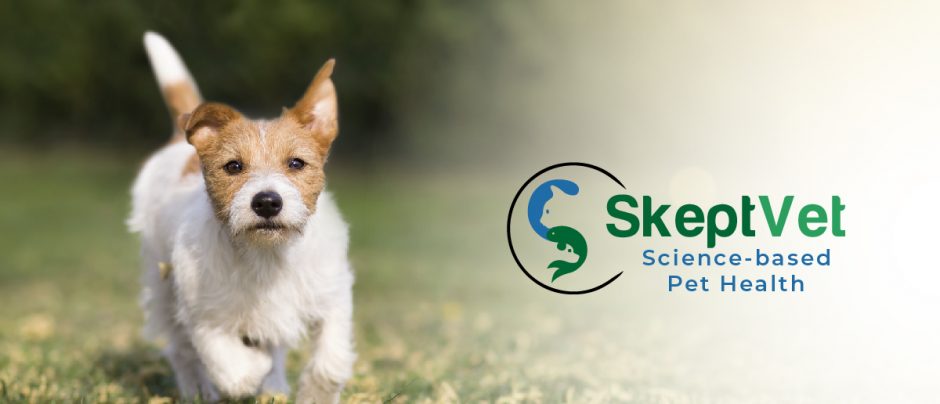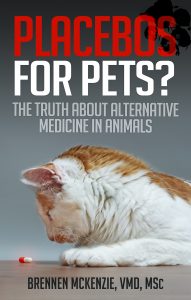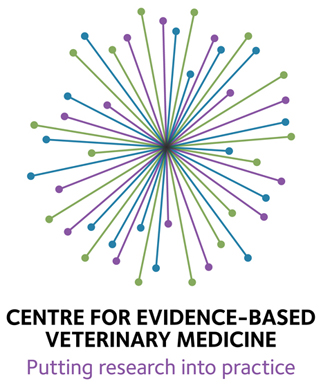The American Veterinary Medical Association (AVMA) and the American Animal Hospital Association (AAHA) recently released a set of Canine and Feline Preventative Healthcare Guidelines. The primary reason for doing so seems to be evidence from several surveys that suggest the demand for veterinary services has decreased in the last 10 years despite a significant increase in the population of dogs and cats in the United States. The surveys indicate that some of the reason for this decline is the increasing reliance of pet owners on the Internet for pet healthcare information, and the lack of awareness of the importance of preventative healthcare for pets.
I certainly agree that preventative healthcare is extremely important, and that reliance on the Internet as a source of information in lieu of professional veterinary care is a mistake. And as a general practitioner, I strongly believe that evidence-based guidelines are indispensible. Such resources have made evidence-based medicine practical for busy primary care clinicians without the time, skills, or energy to critically evaluate the medical literature themselves on an ongoing basis. Such tools would be of great benefit to veterinary medicine, and creating them is one of the goals of the Evidence-Based Veterinary Medicine Association (EBVMA), which I am involved with.
However, it is important that such guidelines be constructed in a way that is truly based on objective scientific evidence. If they are simply a way of promulgating the opinions of individual experts, they will constitute a quite low level of evidence justifying specific clinical practices. If they are not explicit and formal about the primary research evidence they are based on, it is impossible to judge whether they represent an evidence-based assessment or merely opinion, and this will reduce their reliability. And it is important that such guidelines be free from undue influence or bias of individuals or groups with potential conflicts of interest that could compromise the integrity of the evidence gathering and assessment process or the ultimate content of the guidelines.
The difference between truly evidence-based guidelines and opinion-based guidelines is a bit like the difference between a systematic literature review and a narrative or traditional literature review. Systematic reviews use explicit, predetermined criteria to identify and evaluate the primary research relating to a specific, focused question in order to allow a summary with as little bias as possible which can be replicated by others to check its validity. A narrative review is an informal search of the literature, usually covering a broader and less clearly defined subject than a systematic review. In a narrative review, the methods for finding and assessing the primary research literature may not be formally established or fixed in advance, and there is a strong likelihood that the opinions and biases of the reviewer will influence what research is examined and how it is evaluated and weighted in drawing conclusions. Narrative reviews can be useful, but they are a lower level of evidence than systematic reviews and less reliable due to the high risk of bias.
The new preventative guidelines published by the AVMA and AAHA appear to be much more like a narrative review. Despite being promoted as evidence-based, they are really a summary of previous consensus statements and other forms of expert opinion. The topic covered is broad and not clearly defined, the criteria or methods for selection and evaluation of the scientific literature are not stated, and there appears to be a high risk of bias in the content. The effort was also sponsored, and presumably funded, by the Partnership for Preventative Pet Healthcare. This organization, established in July, 2011, is a consortium of 16 organizations, including the AVMA and AAHA as well as 13 corporations selling veterinary products and services. Obviously, this presents the appearance, and the very real risk, of a conflict of interest that has to be considered in evaluating the content of the guidelines.
Many of the guidelines seem quite reasonable to me as a primary care veterinarian. It is hard to object to the idea that pets should have regular checkups, that veterinarians should consider medical health, nutrition, behavior, infectious and zoonotic diseases, and other important issues when evaluating pets, and that veterinarians should communicate clearly with clients and keep good records.
However, even these apparently obvious and sensible guidelines ought to be supported by reasonable and explicit scientific evidence, if possible. Plausibility is an important factor to consider in evaluating a healthcare practice, but it isn’t the end of the line. There is some evidence, for example, that in apparently healthy humans annual physical examinations may not have any real benefits in disease prevention, and the subject is the subject of some debate and controversy. And while it seems reasonable to assume that screening tests are always a good thing that can aid in prevention of illness, I’ve discussed before why this isn’t necessarily true (here and here). So simply because the recommendations seem reasonable, it is not enough to simply assume they are appropriate without looking for supporting evidence. There is a government agency, the U.S. Preventative Services Task Force, devoted entirely to evaluating the evidence and making recommendations concerning preventative healthcare for humans because it is recognized in human medicine that such recommendations ought to be based evidence-based.
There is also the question of whether the AVMA and AAHA can truly be both objective advocates for best clinical practices and also lobbying organizations for veterinarians. Both organizations have historically been more interested in defending the prerogatives of the profession and pleasing their own constituencies than in promoting or policing evidence-based standards of care for veterinary medicine.
AVMA has failed to clearly and consistently defend science-based veterinary medicine and challenge unscientific practices. I wrote earlier this year, for example, about the AVMA’s Model Veterinary Practice Act, which is being revised, and how the weak language concerning alternative veterinary practice could be improved to more clearly identify that most CAM is not consistent with established science or the curriculum taught in most veterinary schools. Instead, the AVMA chose to eliminate any mention of scientific validity in describing CAM. As a membership organization, the AVMA must follow the wishes of its members, and so it is unlikely to be able to effectively advocate for a standard of care that would threaten the practices of any significant number of members.
Similarly, I find it difficult to take seriously the claim that AAHA supports scientific, evidence-based medicine in the face of their recent e-newsletter which lauds the benefits of veterinarians working with animal communicators and previous owner education pieces promoting decidedly non evidence-based practices.
Undoubtedly, some will characterize these new guidelines as at least partially targeted at generating income for veterinarians and others with a financial stake in veterinary healthcare. That is a difficult accusation to defend against given that the guidelines were sponsored primarily by corporations who sell products and services which the guidelines recommended. This is especially true when there is an absence of explicit and good quality evidence provided to support the recommendations. Recommending continuous, year-round broad-spectrum parasite and flea prevention for all dogs and cats regardless of individual risk factors, for example, does not seem consistent with an objective evaluation of the evidence, but it does seem consistent with the objectives of the sponsoring organizations who market parasite and flea preventatives.
I don’t doubt the individual integrity of the members of the committee that drafted the guidelines. I have often pointed out that bias rarely involves straightforward dishonesty or malfeasance, and that we cannot simply dismiss arguments on the basis of the presumed financial motives of those making them. As a clinician and advocate for science-based medicine, I deal every day with pet owners and critics of mainstream veterinary medicine who are suspicious of the role of money in the veterinary profession. The best defense against such suspicions is a transparent assessment of the scientific evidence supporting our practices, and a lot of my efforts are directed at illustrating why the evidence clearly supports conventional, scientific medicine far more than most of the proposed alternatives. So I would have liked to see these guidelines produced in a manner that made them truly evidence-based, with appropriate controls for bias, financial and otherwise, so that I could enthusiastically promote and defend them. As it is, while I think much of the content is reasonable and appropriate, the process and the details appear deeply flawed, which significantly reduces the reliability and value of the guidelines.
I also recognize that no organization and no process for developing consensus or general guidelines can be perfect, and I don’t wish to make the perfect the enemy of the good. However, there is another set of guidelines currently being developed which I think illustrate a superior, and truly evidence-based process that should be a model for future efforts of this kind.
The Veterinary Emergency and Critical Care Society (VECCS) has an ongoing project to establish evidence-based guidelines for CPR in veterinary species. The Reassessment Campaign on Veterinary Resuscitation (RECOVER) project seems to me an outstanding example of what a truly evidence-based process for establishing such guidelines should be. Criteria for selection and evaluation of the primary literature and focused clinical questions were established in advance, a formal process of grading the literature was
followed, and both the primary literature used and any potential conflicts
of interest were explicitly disclosed.
This project illustrates the potential for how such guidelines can be developed in an evidence-based way, avoiding many of the concerns that I think weaken the AVMA/AAHA guidelines. The former is much more like a systematic review and the latter more of a traditional narrative review. Both can be useful, but the systematic and explicit process of the RECOVER initiative is likely to lead to a more reliable end product, more useful and less subject to allegations of bias or hidden economic agendas.
Hopefully, more focused and evidence-based guidelines will become available to general practice veterinarians in the future. I believe this will significantly improve the quality of veterinary care available to pets. But this benefit can only be realized, and pet owners can only be made to have confidence in their veterinarians’ recommendations, if transparent and truly evidence-based processes are utilized to develop such guidelines. I think the RECOVER initiative is an excellent model for such a process, and I hope it will illustrate how an evidence-based approach can be practical and can provide the most effective clinical tools and also the best defense against suspicious about the motives or integrity of the veterinary profession.










